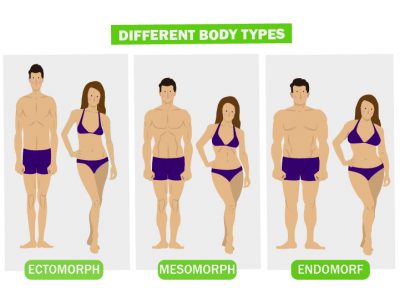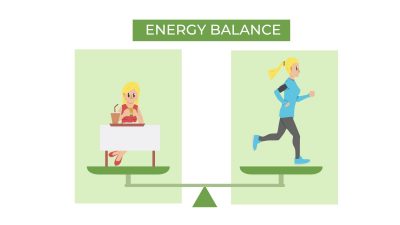 All of us are different.
All of us are different.
Our body type heavily depends on our genetic inheritance; however, bad eating habits are more responsible for obesity and emaciation. We need to be aware of the differences between body types and their individual features, since this information can aid us in adopting healthy, customized eating habits.
We can distinguish three different body types:
The ectomorph, in other words ‘slender’ or ‘hardgainer’ body type. Those who belong in this category are usually leaner, their limbs are long, and their pelvis is narrow. They have low body fat and find it more difficult to gain weight and muscle. Their basal metabolism is faster than average.
The endomorph,‘pyknic’ body type has the typical features of shorter limbs, and a shorter, fubsy build. People in this category have thicker, denser bones. Their slower metabolism results in increased fat storage, making it more arduous to have a healthy physique. This can only be achieved with a well-constructed diet and physical exercise.
Those with a mesomorph,‘athletic’ body type are the luckiest. They are muscular or at least gain muscle easily; they have wide shoulders, a flat stomach, narrow hips, and strong bones. They have the propensity for increased fat storage, but due to their fast metabolism they can also lose fat easily (with the right diet).
Monitoring body weight
Body weight can be monitored easily with objective methods. It is advisable to measure body weight on a weekly basis (or at least once per month), ideally before eating in the morning. It is also advisable to check if the measured body weight falls within the healthy range. This can be done by using the Body Mass Index (BMI), which serves to ascertain the degree of overweight and obesity. The BMI can be calculated by using the following formula: weight in kilograms divided by height in meters squared. The calculator on Okostányér (HUN) or the calculator on CDC (US) provides you with a result in seconds.
The methodological limitations of the BMI
In and of itself the BMI does not provide a full picture of one’s lifestyle. Several negative consequences can stem from a sedentary (inactive) lifestyle and an unhealthy diet. A person with low muscle mass and a normal BMI might have a chronically high body fat percentage, while a higher than normal BMI might be the result of high muscle mass coinciding with high levels of physical activity. A high body fat percentage poses a more serious risk pertaining to various health problems than a high BMI alone. The accumulation of abdominal fat (also referred to as visceral fat) poses the greatest threat, since it is known to increase the risk of hypertension, increased blood sugar and cholesterol levels, type 2 diabetes, and heart attack.
How can the ideal body weight be maintained?
Reaching and maintaining a healthy body weight requires attention and awareness. According to the energy balance equation a person can maintain their weight as long as they don’t consume more calories than the amount their body uses (hence energy input equals energy output). Thus a deviation in any direction results in gaining or losing weight.
The ideal physique can be maintained with a few simple tricks:
- Have breakfast every day.
- Have regular meals; eat less but more often.
- In case of excess calorie intake do physical exercise or reduce the caloric content of the next meal without fasting.
- Do regular exercise.
- Live consciously and manage excess stress, since doing so can facilitate reaching and maintaining the ideal weight.
- Sleep at least 7 hours per day in appropriate, quiet conditions.
The question of losing and gaining weight
Identifying the source of the problem is essential for a successful weight change. This can be followed by setting realistic goals, and the incremental transformation of certain habits. Regular exercise and an appropriately kept food diary facilitate the achievement of weight goals.
If someone wishes to lose weight, they need to consume fewer calories than the amount their body uses. In the case of morbid obesity the help of a health professional is necessary. For individuals who are slightly overweight, reducing their daily intake by approximately 500 kilocalories (with the benchmark being their daily energy requirement) can reduce body weight by 0.5-1 kilograms in a week.
For a successful weight loss the drastic reduction of energy intake must be avoided, since this may trigger the body’s starvation response, halting the weight loss process and causing the body to consume its own muscle tissue.
Besides overweight and obesity, emaciation and malnutrition can also cause serious problems. It is not just a matter of looks; malnutrition can significantly affect one’s health, fitness, and well-being, having negative impact on mental and physical performance, and the immune system. Gaining weight requires just as much consciousness as losing some kilograms. Regular meals, a varied diet, and adequate fluid intake are essential. Healthy snacks, ‘enriched’ meals, regular exercise, and sufficient rest all serve the purpose of gaining weight. However, if positive change is not noticeable in several weeks, the help of a health professional is required.
Graphics: Health Promotion Center